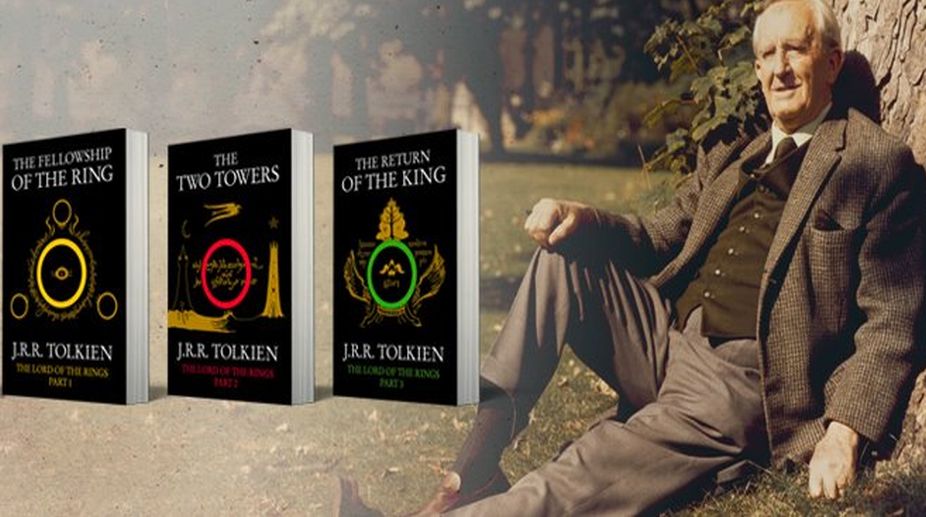Elves, dwarves, Orcs and Hobbits – these names sound curious, bizarre, unrealistic and incredulous. Do they exist at all? Yes, they do but not in our world.
They can be seen in the mountains, dells, dingles and villages of the middle earth. From Forlindon to Harlindon, from Rohan to Gondor, from the lost realm of Arnor to the perilous Mordor, these creatures can be found in the nooks and corners of the middle earth. Well, those few people who don’t know about The Lord of the Rings and The Hobbit, must be wondering what is middle earth?
Advertisement
An imaginary and fictional world- middle earth created by the legendary John Ronald Reuel Tolkien that features in his epic novels is taken as real by the Tolkenians. This fictional world consists of invented languages, delicately constructed nomenclatures and deliberate mistakes that earn the appreciation of its readers. Two of Tolkien’s beautifully written masterpieces
The Lord of the Rings and The Hobbit are among the greatest works of imaginative fiction of the twentieth century. The adventurous raiding of the treasure hoard of Smaug – the legendary dragon by Bilbo Baggins and the perilous journey of Frodo across the misty mountains to the cracks of doom, where he destroys the ruling ring of power are hailed as modern epics.
But the story of the middle earth is not confined to these two works only. From The Silmarillion to Unfinished tales, Tolkien had spread the magic of the middle earth in many of his works. In fact it would not be wrong to admit that his works were mostly centred on middle earth.
Tolkien’s epic legendary precursor to The Lord of the Rings, The Silmarillion is the story of the Silmarilli – the three perfect jewels, fashioned by Feanor, the craftiest of the Elves. Within them was imprisoned the last light of Valinor. But when the dark lord Morgoth stole the three jewels, Feanor and his allies took up arms against the great enemy and waged a terrible war to recover them.
His another masterful works was The Unfinished Tales,where he included the stories ranging from the time of the Silmarillion i.e. the earlier days of the middle earth to the end of the war of rings in The Lord of the Rings. When Tolkien passed away in 1973, he left behind an enormous collection of unpublished writings.
After a literary study spanning 15-long-years, his son Christopher Tolkien managed to bring all of his father’s unpublished writings into the ground breaking work – The history of the middle earth.
The many treasures include the stories which were written much before The Hobbit and The Lord of the Rings were conceived. Combining the literary genius and the unique imagination of J. R. R Tolkien, The history of the middle earth is a series of 12 books which will enthrall the readers.
The first two volumes of the epic series contain the earliest concepts of the middle earth. It tells the story of Eriol, a mariner who undertakes a great voyage westward over the ocean to reach the lonely island where he encounters the Elves and learns their true story – The lost tales of Elfinesse.
Written between 1916 and 1920, these tales Include Tolkien’s earliest accounts of Elves, dwarves, Orcs, Balrog, the two trees of Valinor, the Silmarillion, and the geography of the invented world.
The third, fourth and fifth volumes are written between 1920 and 1937 after which he set aside his works on the legends of the middle earth to start writing The Lord of the Rings. The Lays of Beleriand (third volume), centers on the tales of two of the most crucial stories in Tolkien’s world and has been told in verse. The Lay of the Children of Hurin tells the tragic story of Turin Turambar while The Lay of the Leithian depicts the story of Beren and Luthian, the quest of the real Silmaril and the pernicious encounter with Morgoth in the subterranean fortress.
The shaping of Middle-earth tells us more of Elior’s journey to the lonely isle and also includes the original silmarillion and Quenta Noldorinwa.These two works were the only two versions of the myths of the first age (of the middle earth) that Tolkien had managed to complete.
The Lost Roadand some of his other writings examine the legend of the downfall of Numenor and also contain an index of Elvish vocabularies. The sixth-ninth volume of this work examines the creation of the Lord of the rings from its inception to its finished form.
The Return Of The Shadow, the sixth volume tells us how Bilbo’s magic ring turned into the ruling ring of Lord Sauron while The Treason of Izengar examines the expansion of the tale into new lands and new peoples to the south and east of the misty mountains.
The eighth volume The War of the Rings traces the battle of Helm’s, with the ninth volume Sauron defeated, concluding the study of The Lord Of The Rings depicts Frodo’s rescue from the Tower of Cirith Ungol. Volumes 10 and 11 include the full texts – Annals of Amen and Grey Annals respectively.
The eleventh volume named The War of the Jewels also describes the wrathful conflict of the High Elves and their friends with the power of the dark lord. However, the final volume traces the evolution of the addendums of the Lord of the rings that provide an inclusive history of the second and third ages.
The creator of the most unique fictional world, J. R. R Tolkien was not just an author. Rather he was himself the wizard of his tales, even more powerful than Gandalf and Morgoth, spreading his magic through his writings.
Coordinator, Class XI, Patha Bhavan High School
















